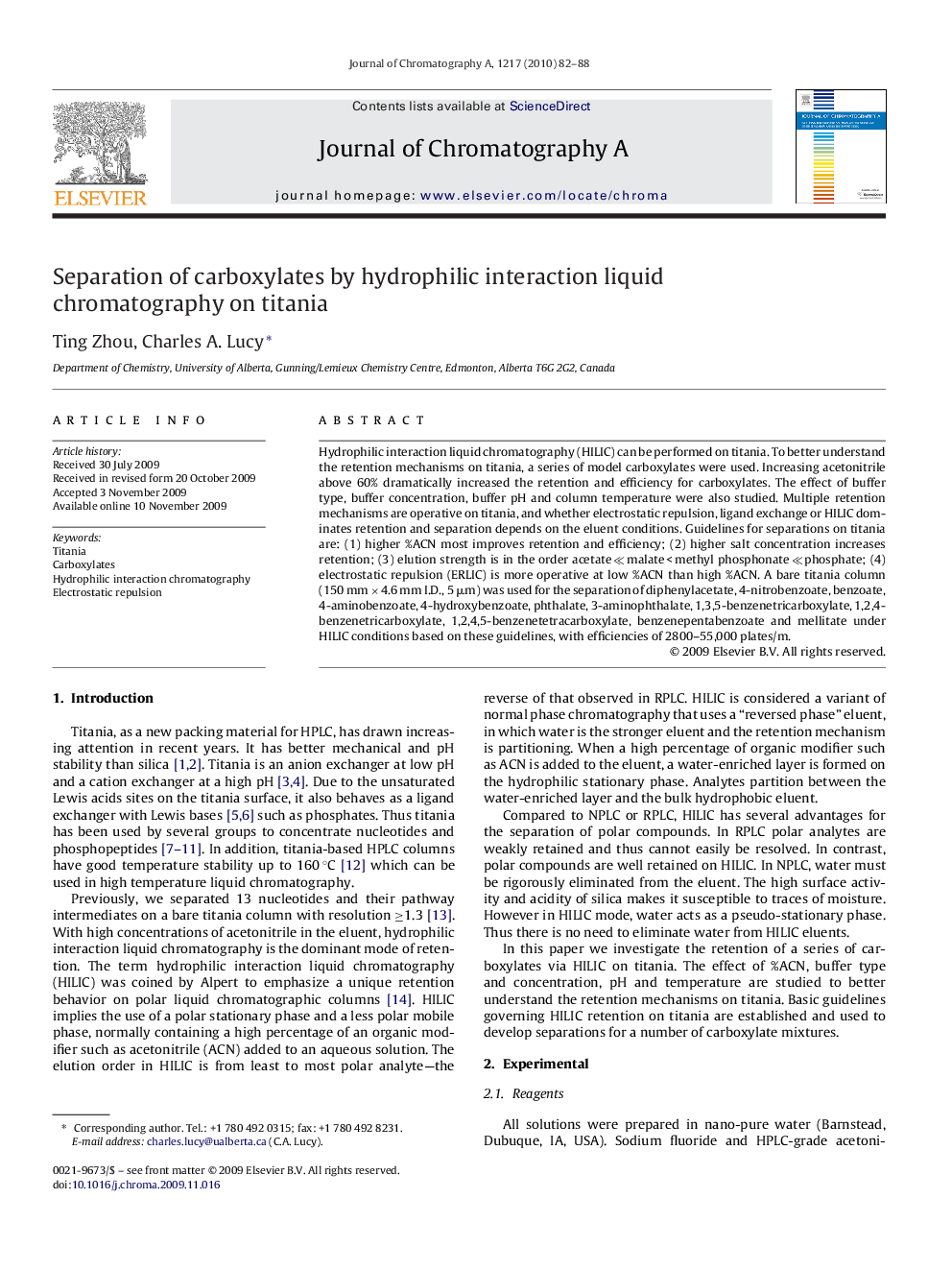| Article ID | Journal | Published Year | Pages | File Type |
|---|---|---|---|---|
| 1204374 | Journal of Chromatography A | 2010 | 7 Pages |
Hydrophilic interaction liquid chromatography (HILIC) can be performed on titania. To better understand the retention mechanisms on titania, a series of model carboxylates were used. Increasing acetonitrile above 60% dramatically increased the retention and efficiency for carboxylates. The effect of buffer type, buffer concentration, buffer pH and column temperature were also studied. Multiple retention mechanisms are operative on titania, and whether electrostatic repulsion, ligand exchange or HILIC dominates retention and separation depends on the eluent conditions. Guidelines for separations on titania are: (1) higher %ACN most improves retention and efficiency; (2) higher salt concentration increases retention; (3) elution strength is in the order acetate ≪ malate < methyl phosphonate ≪ phosphate; (4) electrostatic repulsion (ERLIC) is more operative at low %ACN than high %ACN. A bare titania column (150 mm × 4.6 mm I.D., 5 μm) was used for the separation of diphenylacetate, 4-nitrobenzoate, benzoate, 4-aminobenzoate, 4-hydroxybenzoate, phthalate, 3-aminophthalate, 1,3,5-benzenetricarboxylate, 1,2,4-benzenetricarboxylate, 1,2,4,5-benzenetetracarboxylate, benzenepentabenzoate and mellitate under HILIC conditions based on these guidelines, with efficiencies of 2800–55,000 plates/m.
